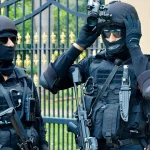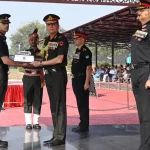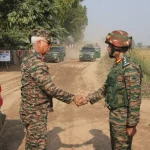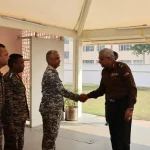The Thematic Apperception Test (TAT) holds a vital position within the psychological assessment framework of the Services Selection Board (SSB) interview process, a multi-day evaluation designed to identify candidates who possess the qualities necessary for effective military leadership. By utilizing storytelling based on ambiguous images, the TAT uncovers complex layers of a candidate’s personality, aspirations, and emotional maturity, serving as a critical tool in identifying Officer Like Qualities (OLQs). This article delves into a comprehensive exploration of the TAT within the SSB interview, elucidating its purpose, procedures, significance, and evaluation techniques, while also addressing challenges and future implications.
Historical Context of the Thematic Apperception Test
The TAT was developed in the 1930s by psychologist Henry A. Murray and his colleague Christiana D. Morgan at Harvard University. The original intention was to create a projective psychological assessment that would explore the unconscious motives, fears, and drives of individuals through storytelling. By presenting ambiguous images, the test prompts participants to project their aspirations and psychological state into the narratives they construct. Over the decades, the TAT has evolved into a sophisticated assessment tool widely employed in clinical psychology, personality research, and military evaluations, including the rigorous SSB interview process.
Purpose of the Thematic Apperception Test
The primary aim of the TAT in the context of the SSB interview is to uncover the unconscious motives that guide a candidate’s thoughts and actions. By requiring candidates to formulate stories around ambiguous images, the TAT encourages spontaneous responses that reveal deeper psychological insights. This method of projection allows assessors to glean information about:
- Motivation and Aspirations: Understanding what drives a candidate at a fundamental level.
- Fears and Challenges: Identifying underlying anxieties that may impact decision-making and coping strategies.
- Social Drives and Relationships: Exploring how candidates perceive their interaction with others, and their capacity for empathy and leadership.
Format and Procedure of the TAT in the SSB Interview
The TAT is an integral component of the psychological battery conducted during Stage 2 of the 5-day SSB interview process. Below are the key elements of this assessment method:
Structure of the Test
- Slides: Candidates are presented with 12 slides, comprising 11 pictures that depict various ambiguous scenes and 1 blank slide designed to evaluate free thinking.
- Timing: Each image is displayed for 30 seconds, giving candidates the opportunity to observe and reflect. Following this, they have approximately 3 to 4 minutes to compose a story inspired by the image.
- Narrative Focus: The narratives must concentrate on a main character confronted with a problem, emphasizing a resolution that reflects hope and problem-solving capabilities—crucial traits for military officers.
The Blank Slide
The blank slide plays a unique role within the test format. It serves as a vital tool for assessing a candidate’s imagination and subconscious responses. Unlike the other slides, which provide visual cues, the blank slide invites candidates to project their inner thoughts and creativity without restraints, facilitating a deeper insight into their psyche.
Significance of the Thematic Apperception Test in SSB
The TAT serves multiple significant functions during the SSB interview process. By diving into a candidate’s psyche, it assesses competencies that are critical for prospective officers in the Defence services:
- Creativity and Innovation: The ability to think creatively is paramount in military operations that often require out-of-the-box solutions.
- Decision-Making Capability: Through storytelling, candidates demonstrate their strategic thinking and ability to make rational choices under pressure.
- Emotional Stability: Candidates’ resilience and emotional responses to various scenarios can be revealing of their suitability for the demands of military service.
- Interpersonal Skills: The narratives allow assessors to evaluate how candidates conceptualize and approach social relationships, an essential aspect of leadership.
Scoring and Evaluation of TAT Responses
The evaluation of TAT responses is a refined process conducted by trained psychologists, who assess stories based on several criteria:
- Clarity and Coherence: How well the story flows and is articulated.
- Realism and Positivity: Stories should be grounded in realistic settings, maintaining an optimistic outlook, as negativity can negatively impact scores.
- Presence of Leadership Qualities: Details in the narrative that reflect qualities such as determination, empathy, and rationale are particularly scrutinized.
Candidates are encouraged to present concise, pragmatic stories that not only engage the assessors but also demonstrate their observations and imagination. Negative or unrealistic elements within a story may adversely affect a candidate’s evaluation.
Statistical Data and Research Insights
Research and anecdotal evidence suggest a robust correlation between TAT performance and effective leadership in military contexts. While specific statistics on TAT outcomes within the SSB interview structure may vary, the predictive validity of projective assessments like TAT in understanding personality traits has been established in psychological literature. For instance, studies indicate that successful military officers often score higher on measures of emotional intelligence and problem-solving capabilities, both of which can be illuminated through the TAT storytelling process.
Comparative Analysis with Other Psychological Tests
The TAT is unique among psychological assessments utilized in the SSB interview process, especially when compared to structured tests like the Minnesota Multiphasic Personality Inventory (MMPI) or other psychometric evaluations. The TAT’s projective nature allows candidates to express themselves in ways that direct questioning may not permit. This indicates a contrasting approach found in behavioral assessments, which often focus on overt responses rather than digging into subconscious motivations. Each method possesses its strengths, with the TAT shining in its capacity to uncover deeper insights through narrative exploration.
Challenges of Implementing the TAT
Despite its efficacy, several challenges accompany the implementation of the TAT within the SSB framework:
- Subjectivity in Evaluation: The storytelling nature of TAT responses makes scoring inherently subjective, which may lead to inconsistencies across different assessors.
- Cultural Context: The ambiguity of images may lead some candidates to interpret them differently based on cultural backgrounds, potentially skewing results.
- Pressure of Performance: The high-stakes context of the SSB interview can induce anxiety in candidates, potentially affecting their storytelling and responses.
Proposed Solutions
To address these challenges, the following measures can enhance the reliability and validity of the TAT in SSB interviews:
- Standardized Training for Assessors: Implement rigorous training programs for assessors to ensure consistency in evaluation approaches.
- Cultural Sensitivity: Incorporate a diverse range of images that resonate across various cultural contexts.
- Stress Management Techniques: Providing candidates with resources to manage interview anxiety can improve their storytelling performance.
Future Trends and Predictions
Looking ahead, the role of the TAT within the SSB interview may witness several trends:
- Integration with Technology: The combination of TAT with advanced data analytics and machine learning could enhance the evaluation process, making it more objective.
- Emphasis on Emotional Intelligence: As military operations grow increasingly complex, the ability to understand and manage emotions will be paramount, likely resulting in a more pronounced inclusion of TAT in psychological assessments.
- Cross-Disciplinary Insights: Insights from organizational psychology could inform the TAT’s implementation, aligning it with evolving leadership paradigms in modern military contexts.
Conclusion
The Thematic Apperception Test represents a pivotal aspect of the SSB interview process, providing invaluable insights into the psychological underpinnings of candidates aspiring to serve in the Defence forces. Through its unique approach of eliciting narratives based on ambiguous images, the TAT reveals intrinsic personality traits, aspirations, and emotional competencies essential for effective leadership. As military assessments evolve, so too will the importance and methodology of the TAT, reaffirming its role as a cornerstone in identifying future leaders capable of navigating the complexities of modern military challenges.
For candidates preparing for the SSB interview, resources and materials available from SSBCrack and SSBCrackExams can greatly aid in understanding the TAT and honing the necessary skills to excel in this assessment. Engaging with the right study materials and practice methods can equip candidates for this critical aspect of the selection process.













